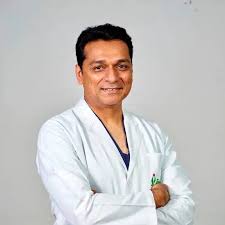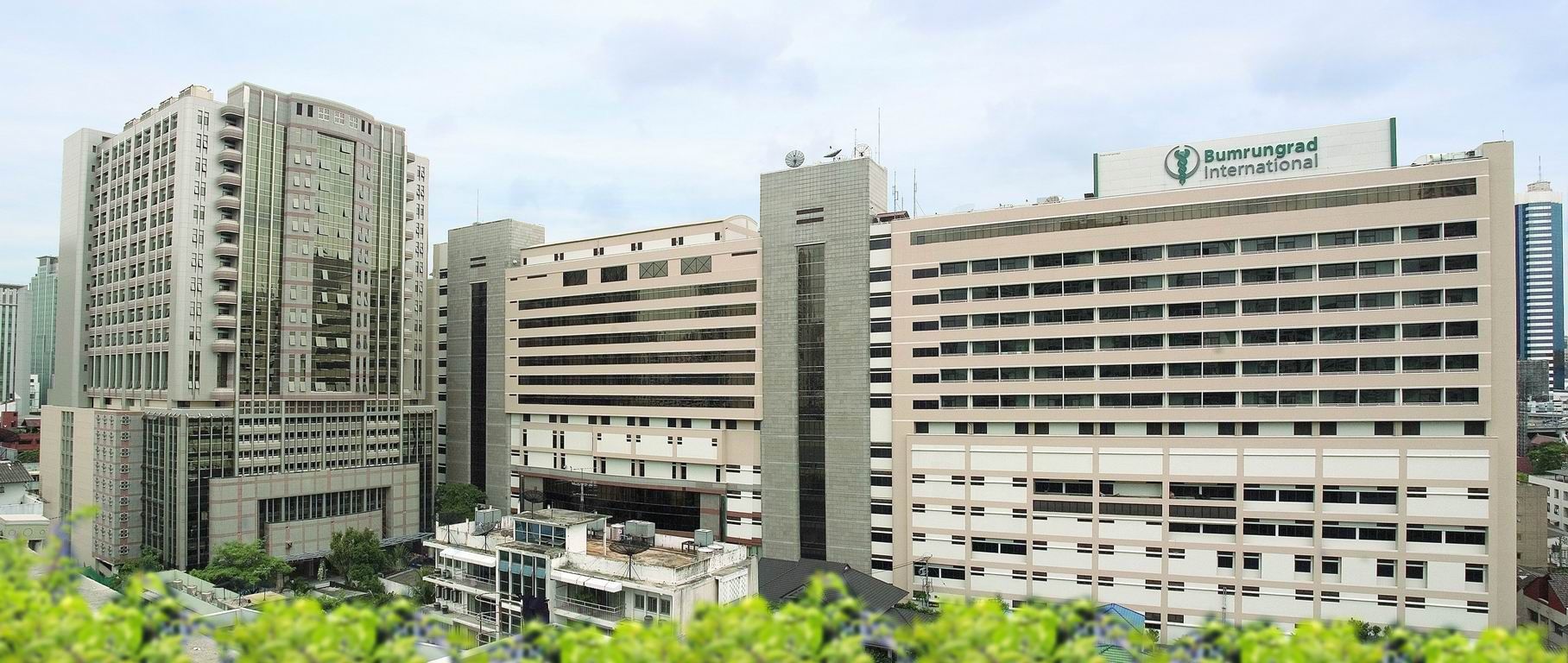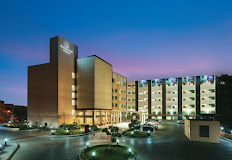Orthopaedic
Surgery for De Quervain's Tenosynovitis Treatment
De Quervaina's syndrome
De Quervain's tenosynovitis (De Quervaina's syndrome or De Quervaina's disease) causes pain when the patients move their wrist and thumb, and generally a tender swelling at the base of their thumb. The two tendons that move the thumb generally glide freely through a tight tunnel (sheath) at the base of the thumb.
Introduction about De Quervain’s Tenosynovitis Treatment in India
De Quervain’s Tenosynovitis is a painful condition affecting the tendons on the thumb side of the wrist the main symptoms of which are pain and wrist swelling. In India, management of this particular pathology is complex and can be treated both conservatively and surgically.
What is Surgery for De Quervain's Tenosynovitis?
De Quervain’s Tenosynovitis (De Quervain’s syndrome or De Quervain’s disease) causes pain when the patients move their wrist and thumb, and generally a tender swelling at the base of their thumb. The two tendons that move the thumb generally glide freely through a tight tunnel (sheath) at the base of the thumb. If the fibrous roof of the tunnel thickens, the tunnel becomes too tight, generally causes pain when the patients move their wrist and thumb. Sometimes the wrist and thumb may feel stiff and the thumb may lock slightly when moved by the patients.
What are the benefits of surgery?
The goal is to relieve the pain at the base of the thumb.
De Quervain’s Tenosynovitis Brace
A De Quervain’s tenosynovitis brace is a type of device that focuses on supporting as well as stabilising the wrist and the thumb in a bid to ease tenderness and inflammation to the region.
Here’s an overview of the features of using a de quervain's brace for this condition:
- Wrist and Thumb Support
- Adjustable Straps
- Padding
- Lightweight and Breathable Material
- Easy to put on and Remove
Need for the Surgery for De Quervain’s Tenosynovitis
Surgical intervention for De Quervain’s tenosynovitis is an option where conservative treatment options are ineffective, and the patient has persistent pain that limits functional ability.
Here are key reasons that highlight the need for surgical intervention:
- Persistent Pain and Discomfort
- Limited Functionality
- Corticosteroid Injection Ineffectiveness
- Chronic Condition
- Severe Tendon Impingement
- Improved Quality of Life
- Failure of Conservative Measures
Symptoms of de Quervain’s tenosynovitis
The main symptom of de Quervain’s tenosynovitis is pain or tenderness at the base of the thumb. The patients might also feel pain going up their forearm. The pain may come on immediately or develop slowly with time. It may get even worse when the patients use their hand, wrist or thumb.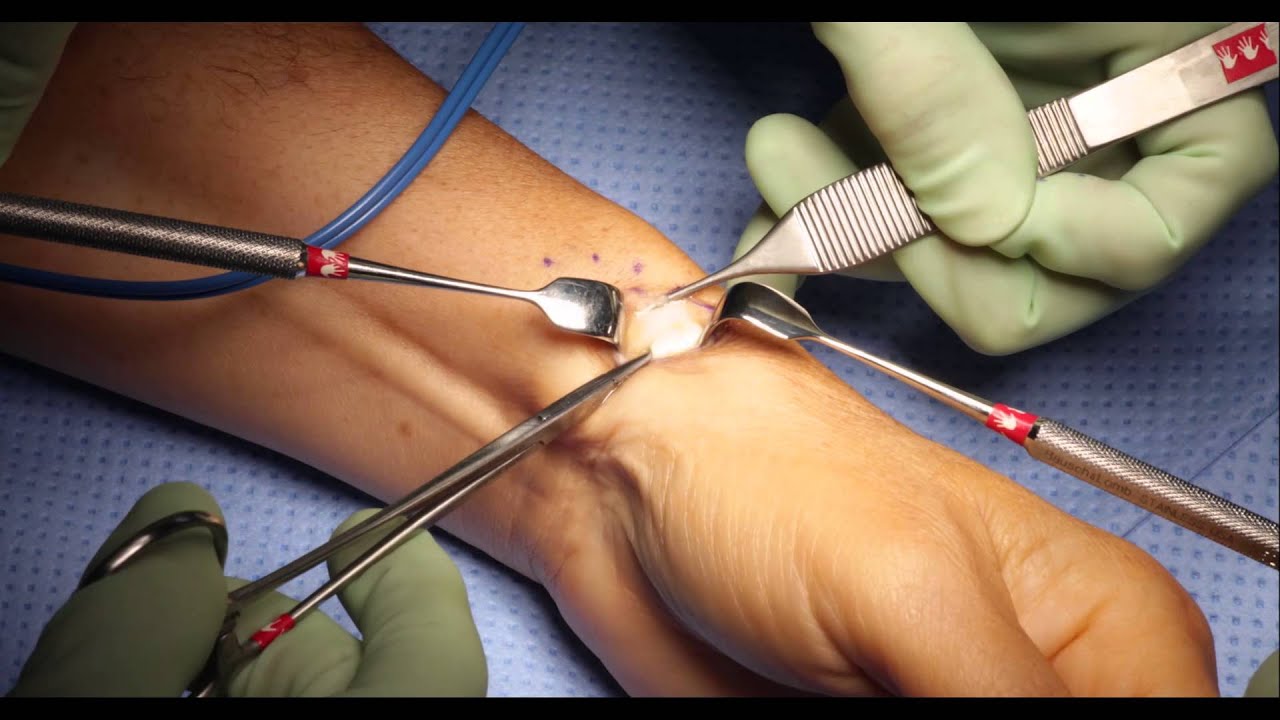
Other symptoms include the following:
- Swelling near the base of the thumb.
- Numbness along the back of the thumb and index finger.
- A “catching” or “snapping” feeling when the patients move their thumb.
- A squeaking sound as the tendons move inside the swollen sheaths.
What Complications can happen?
Complications are very rare, but like every other surgery involve some potential risks and complications.
The potential complications for this procedure include the following:
- Infection at the incision area
- Damage to the radial nerve (neuroma), though this is generally temporary
- Tenderness on the incision area
- Displacement of the tendons, resulting in snapping or catching sensation in the wrist, this is very rare.
- Patients can decrease their risk of complications by following their post-surgical care instructions as instructed by the doctors.
Medical attention is required if any of the following symptoms occur:
- Numbness or tingling in hands or fingers
- Significant bleeding from the incision or due to the opening of the incision
- Inability in moving the fingers
- Signs of an infection, which may include the following
- Pus from the incision site
- The skin around the incision site is swollen or warm when touched
- The Fever
Nearly all those who have surgery for De Quervain’s disease have a complete recovery from symptoms and pain within a few weeks. For the few people who face complications, they are almost always minor and are temporary. De Quervain’s disease results in pain when the patients move their wrist and thumb, and generally a tender swelling at the base of the thumb. If treatment with steroid injections has failed, surgery should help in relieving the pain.
What causes de Quervain’s tenosynovitis?
The most common cause of de Quervain’s tenosynovitis is persistent overuse of the wrist. Repetitive movements day after day can result in irritation and pain. One frequent movement that causes this disease is lifting a child into a car seat. Another one is lifting heavy grocery bags by the handles. Other causes could also include a direct injury to the wrist or inflammatory arthritis.
The people are more likely to develop de Quervain’s tenosynovitis if:
- They are a woman.
- They are 40 years or older.
- Their hobby or job usually involves repetitive hand and wrist motions. This is a very common cause that results in de Quervain’s tenosynovitis.
- The person has injured their wrist. Scar tissue can limit the movement of their tendons.
- The women are pregnant. Hormonal changes during pregnancy can result in this disease.
- People have arthritis.
Facilities and Services offered for International patients for the Surgery for De Quervain’s Tenosynovitis
Some of the Indian hospitals that have embraced the surgical treatment of De Quervain’s tenosynovitis embrace a variety of facilities and services suitable to international patients. These services play to facilitate a positive experience during the treatment procedures.
Here are some common facilities and services provided:
- Dedicated International Patient Departments
- Visa Assistance
- Travel and Accommodation Arrangements
- Pre-operative Assessments
- Multilingual Staff
- Treatment Packages
- Telemedicine Consultations
- Post-operative Care and Rehabilitation
- Cultural and Dietary Considerations
De Quervain Syndrome Treatments and Therapy for De Quervain’s Tenosynovitis
Preparing for De Quervain’s Tenosynovitis Surgery
For preparing for the surgery, the following must be done:
- The patients must tell their physician about all the medicines being taken, including vitamins and supplements.
- The patients must stop taking medicines that can interfere with the blood’s ability to clot.
- The patients must refrain from eating or drinking 6 to 12 hours prior to the procedure.
At the day of surgery, patients will be required to arrange someone who can drive them home afterward, since it is an outpatient procedure. The surgery generally takes up to 30 minutes.
De Quervain's Syndrome Test
De Quervain’s tenosynovitis is diagnosed through clinical examination and certain clinical tests.
Here are the primary methods used to confirm the condition:
- Finkelstein’s Test
- Imaging studies such as X-Rays, Ultrasound, MRI
- Electromyography
Surgical procedure
If these treatments don’t help, the doctor may consider surgery. The operation releases the tendon sheath so the tendon can move smoothly. It’s an outpatient process, which means the patients go home just after their surgery. The patients will probably see the physical therapist again for post-surgery exercises for strengthening their thumb and wrist.
Post-Treatment Procedure for De Quervain’s Tenosynovitis
As for De Quervain’s tenosynovitis, treatment and management for the condition is not complete until after the period of exclusion, rehabilitation of the affected wrist, and prevention against reappearance of the disease. After surgical or conservative treatment, here are the recommended post-treatment procedures and care guidelines:
- Initial Recovery Phase
- Pain Management
- Wound Care
- Rehabilitation and Physical Therapy
- Gradual Return to Activities
- Follow-up Appointments
- Lifestyle Adjustments
Alternatives to surgery are:
If the patient’s symptoms are mild, resting their wrist and thumb, physiotherapy, anti-inflammatory painkillers such as ibuprofen, and wearing a splint at night may help in relieving these symptoms. A steroid injection into the base of the thumb can treat the problem in 8 out of 10 people.
Home remedies and lifestyle changes:
The patients must see the doctor if they think they have de Quervain’s. But these methods can be tried at home for feeling better and thus keeping the thumb healthy:
- Ice the site to ease the inflammation.
- Anything that makes it worse must be stopped immediately. Repeated motions and pinching moves with the thumb and fingers must be avoided.
- The splint must be worn by the patients as long as the doctor tells them to.
- Exercises must be performed by the patients.
Success Rate of De Quervain Disease Treatment
The surgical treatment of De Quervain’s tenosynovitis, success rates ranges from 70% to 90%. Steroid injections set up a speedy improvement in 60-80% of patients, whereas some of them may need several injections. Conventional surgical management which typically entails the release of the tendon sheath consistently records a success rate of 90% to 95% in terms of elimination of symptoms and functional outcome.
How soon will The Patients recover?
The patients should be able to go home the same day as the surgery has taken place. The patients must keep their hand raised and bandaged for 2 days. It is important to gently exercise the fingers, shoulder, and elbow in order to prevent stiffness. Regular exercise should help the patients to return to their normal activities as soon as possible. Before the patients start exercising, they must ask the healthcare team or the GP for advice. For about 8 out of 10 people, symptoms improve very quickly, but the wrist and thumb may ache for a few weeks.
India’s Best Hospitals for the Surgery of De Quervain’s Tenosynovitis
India’s Best Doctors for the Surgery of De Quervain’s Tenosynovitis
- Dr. Vivek Logani
- Dr. Vikas Gupta
- Dr. Manoj Miglani
- Dr. Subhash Jangid
Why Choose GetWellGo for Surgery of De Quervain’s Tenosynovitis?
An appropriate provider selection is necessary to obtain proper care and achieve better results in case of de quervain’s tenosynovitis. For several reasons, GetWellGo has everything that defines a good health care service and might be preferable for patients with de quervain’s tenosynovitis.
Here are some key reasons to consider GetWellGo:
- Comprehensive Care Approach
- Advanced Treatment Options
- Personalized Care Plans
- Patient Support Services
- Emphasis on Education and Resources
- Convenience and Accessibility
- Medical Visa Assistance
- Travel and Accommodation
- Multilingual Support
Conclusion
De Quervain’s tenosynovitis is a disease that results in continuous pain and restrictions. However, surgery may be required if the patients do not respond to these treatments. This procedure is mostly non–invasive, under local anaesthesia, with the patient able to go home immediately after the operation, and their pain and functioning level is notably enhanced. After surgery, the bone is immobilized, pain is alleviated, and the appropriate form of physical therapy is provided.
FAQs
1. What should I expect after surgery?
- If you have undergone surgery you are likely to experience pain, heat and swelling, soreness or even numbness, and tingling around the wound. You should not lift heavy objects or do repetitive work that requires the use of your arms. You will require a splint for up to four weeks and suture removal will occur one to two weeks after the surgery.
2. How long will it take to recover?
- You should be able to move your wrist and hand freely after 6–12 weeks and all the feeling need to come back to your hand. But, people become well or do not get well in different ways.
3. When can I return to work?
- When you can go back to work depends on the type of work you do, and you might be able to return a few days after surgery. It may take more time if your work requires more of hand or wrist movements such as typing, pressing anything, or lifting anything.
4. What can possibly go wrong or be expected when performing this procedure?
- Some of the risks include post-operative infection or development of complications such as infection at the incision site and radial nerve injury.
TREATMENT-RELATED QUESTIONS
GetWellGo will provide you end-to-end guidance and assistance and that will include finding relevant and the best doctors for you in India.
A relationship manager from GetWellGo will be assigned to you who will prepare your case, share with multiple doctors and hospitals and get back to you with a treatment plan, cost of treatment and other useful information. The relationship manager will take care of all details related to your visit and successful return & recovery.
Yes, if you wish GetWellGo can assist you in getting your appointments fixed with multiple doctors and hospitals, which will assist you in getting the second opinion and will help you in cost comparison as well.
Yes, our professional medical team will help you in getting the estimated cost for the treatment. The cost as you may be aware depends on the medical condition, the choice of treatment, the type of room opted for etc. All your medical history and essential treatment details would be analyzed by the team of experts in the hospitals. They will also provide you with the various types of rooms/accommodation packages available and you have to make the selection. Charges are likely to vary by the type of room you take.
You have to check with your health insurance provider for the details.
The price that you get from GetWellGo is directly from the hospital, it is also discounted and lowest possible in most cases. We help you in getting the best price possible.
No, we don't charge patients for any service or convenience fee. All healthcare services GetWellGo provide are free of cost.
Top Doctors for Orthopaedic
Top Hospitals for Orthopaedic
Contact Us Now!
Fill the form below to get in touch with our experts.

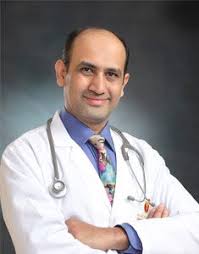
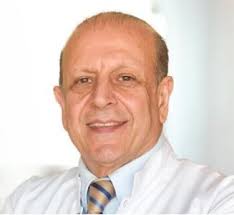
.jpg)
